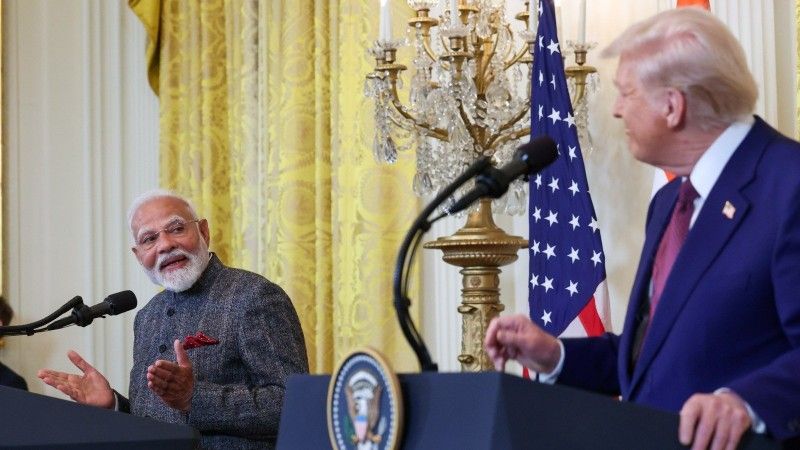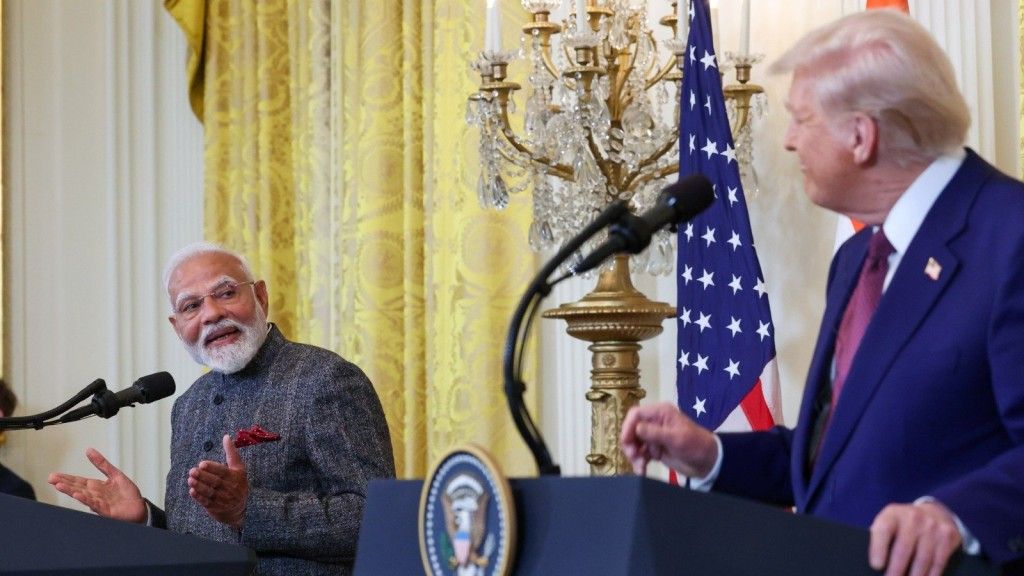
President of the United States Donald Trump and Prime Minister of India Narendra Modi
Photo. Narendra Modi/X
Two strong-willed leaders: Donald Trump and Narendra Modi. Their „friendship” during Trump’s first term is still remembered, and there may remain some degree of personal rapport. However, their political and economic agendas diverge. Trump’s approach to safeguarding U.S. interests increasingly collides with India’s priorities in trade and development. This matters because the discussion concerns trade between the world’s largest economy (the United States) and the fifth largest (India).
In New Delhi, last year’s U.S. elections were followed with the hope for a Trump victory. Kamala Harris has never enjoyed popularity in India, while the return of a „tough guy” in Washington seemed favorable to the ruling BJP. Yet, recent months have brought increasing friction. The United States positioned itself as mediator during a crisis between New Delhi and Islamabad, and Trump invited Pakistan’s Chief of Army Staff to lunch at the White House. These developments were not well received in India and drew public criticism, including direct remarks from Modi who rejected any kind of „mediation” from the US.
This tension set the stage for disputes over Trump’s tariffs on foreign goods. US-Indian technical-level discussions had been underway for some time, but high-level talks were hindered by the fallout from Trump’s comments on Pakistan. In turn, Trump escalated matters by raising proposed tariffs and citing India’s continued purchase of Russian oil as justification. India has, indeed, maintained these imports since the beginning of Russia’s aggression against Ukraine, despite criticism from both the United States and the European Union.
Some analysts interpreted this as an attempt to pressure India into distancing itself from Russia. However, this is likely just one of many arguments within a broader negotiation. Even so, discussions in India have included the possibility of reducing imports, although recent meetings have reaffirmed the strategic nature of Indo-Russian relations.
The U.S. has prepared a comprehensive package of proposals affecting agriculture, as well as textiles and jewelry—key sectors of India’s economy. India has responded by signaling its willingness to reduce purchases of American defense equipment. In parallel, New Delhi has engaged more actively with Moscow and has also reopened dialogue with Beijing, a relationship that had cooled for years. Modi has recently spoken with Brazilian President Lula, with a bilateral meeting planned in the near future. India is also seeking to reenergize BRICS, raising the issue of trade in national currencies and even proposing the rupee as an international medium of exchange, while at the same time formally distancing itself from de-dollarization efforts.
Negotiations remain stalled. A new round, scheduled for late August, has been canceled, likely in part because the Trump administration is focused on the war in Ukraine. In India, however, the suspension of talks is viewed negatively. Business leaders are eager to restore stable economic relations with the U.S. but remain unwilling to accept what they perceive as unfair treatment.
The process will likely continue for some time. Notably, the U.S. side has entered these talks with thorough preparation, a clear strategy, and an ability to engage Indian negotiators effectively. The results of these negotiations will affect, in some way, the whole world.
Author: Adam Burakowski – Political scientist. Associate Professor ISPPAN Central Eastern Europe, South Asia, Souhern Africa, Former Ambassador to India and South Africa
